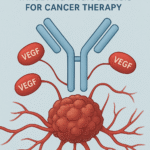Cataract: Causes, Pathophysiology, Risk Factors, Treatment, and Prevention
Cataract is one of the most common causes of visual impairment and blindness globally, particularly in aging populations. It is a condition characterized by clouding or opacity of the natural lens of the eye, which leads to progressive vision loss. Despite its high prevalence, cataract is highly treatable, especially when detected early. In this detailed guide, we will explore the pathophysiology, causes, risk factors, diagnosis, treatment options, and preventive measures of cataract.
Introduction to Cataract
The eye’s lens is a transparent, flexible, and biconvex structure located behind the iris. It plays a crucial role in focusing light onto the retina. In cataract, this normally clear lens becomes cloudy, blocking or scattering light and impairing vision.
Cataract formation is typically a gradual process, often developing over years. While it is most commonly age-related, cataracts can also be congenital, caused by trauma, certain diseases, or medication use.
Types of Cataract
Understanding the types of cataracts is important for diagnosis and treatment:
- Nuclear Cataract: Begins in the center (nucleus) of the lens; common in older adults.
- Cortical Cataract: Affects the outer layer (cortex) of the lens and spreads inward.
- Posterior Subcapsular Cataract: Develops at the back of the lens; progresses faster than other types.
- Congenital Cataract: Present at birth or shortly after.
- Traumatic Cataract: Occurs after an eye injury.
- Secondary Cataract: Caused by diseases like diabetes or as a side effect of medications like corticosteroids.
Pathophysiology of Cataract
Cataract formation is primarily due to the denaturation and aggregation of lens proteins, which leads to clouding of the lens. Let’s break it down further:
1. Oxidative Stress and Free Radicals
The lens is constantly exposed to ultraviolet (UV) radiation, which generates free radicals. Over time, these free radicals damage the proteins and lipids in the lens, leading to oxidation and cross-linking of lens proteins. This results in the formation of insoluble aggregates that scatter light and reduce transparency.
2. Protein Modification and Aggregation
Alpha-crystallins are the major proteins in the lens responsible for maintaining its transparency. In cataract, these proteins undergo post-translational modifications such as glycation and phosphorylation, causing misfolding and aggregation.
3. Lens Epithelial Cell Dysfunction
The lens epithelium helps maintain lens homeostasis. Damage to these cells—by aging, radiation, or metabolic disturbances—impairs nutrient transport and waste removal, contributing to protein denaturation.
4. Altered Ion Homeostasis
Disturbance in calcium, sodium, and potassium levels disrupts the osmotic balance of the lens. Increased intracellular calcium activates calpain proteases, which degrade lens proteins and contribute to opacification.
Causes of Cataract
Multiple intrinsic and extrinsic factors can lead to cataract formation:
- Aging: Natural degeneration of lens proteins with age is the most common cause.
- Genetics: Inherited mutations can predispose individuals to congenital or early-onset cataracts.
- Trauma: Penetrating or blunt injury can cause localized clouding or disruption of the lens fibers.
- Radiation Exposure: Ultraviolet light and ionizing radiation can damage lens proteins.
- Diabetes Mellitus: High glucose leads to sorbitol accumulation in the lens, resulting in osmotic damage and early cataract formation.
- Medications: Long-term use of corticosteroids and certain antipsychotics can induce cataracts.
- Smoking and Alcohol: These substances generate oxidative stress, which damages lens proteins.
Risk Factors
A wide range of risk factors are associated with cataract development:
1. Age
The risk significantly increases after the age of 60, though it can begin earlier.
2. Family History
Genetic predisposition plays a significant role, especially in early-onset or congenital cases.
3. Diabetes and Metabolic Disorders
Persistent hyperglycemia accelerates the onset of cataract.
4. Sunlight Exposure
UV radiation accelerates oxidative damage in the lens.
5. Lifestyle Habits
Smoking and excessive alcohol consumption increase cataract risk through oxidative stress.
6. Nutritional Deficiencies
Low intake of antioxidants like vitamins C and E can make the lens more susceptible to oxidative damage.
7. Ocular Conditions and Surgeries
Other eye diseases like uveitis or previous surgeries can predispose one to secondary cataracts.
Symptoms of Cataract
Cataracts usually develop slowly and may go unnoticed in the early stages. Common symptoms include:
- Blurred, cloudy, or dim vision
- Difficulty seeing at night
- Sensitivity to light and glare
- Halos around lights
- Frequent changes in eyeglass or contact lens prescription
- Faded or yellowed colors
- Double vision in one eye
Diagnosis of Cataract
Diagnosis is mainly clinical, involving:
- Visual Acuity Test: Measures how well you can read letters on a chart.
- Slit-Lamp Examination: Magnifies the structures of the eye to detect lens opacities.
- Retinal Exam: After pupil dilation, the retina and lens are examined for damage.
- Tonometry: Measures intraocular pressure to rule out glaucoma.
Treatment Options
The only effective treatment for cataract is surgical removal of the cloudy lens. However, in the early stages, vision can be managed with corrective lenses and lifestyle adjustments.
1. Non-Surgical Management (Early Stage)
- Prescription Glasses: Updated eyeglasses may help maintain vision.
- Magnifying Lenses and Improved Lighting: Helpful for reading and daily activities.
- Lifestyle Modifications: Wearing sunglasses and avoiding night driving may be recommended.
2. Surgical Treatment
Surgery becomes necessary when cataracts interfere with daily life.
a. Phacoemulsification
The most common method. The cloudy lens is emulsified using ultrasound and replaced with an artificial intraocular lens (IOL).
b. Extracapsular Cataract Extraction (ECCE)
Used in advanced cases. A larger incision is made to remove the lens in one piece.
c. Femtosecond Laser-Assisted Cataract Surgery (FLACS)
A laser is used for precise incisions and lens fragmentation, offering better accuracy and faster recovery.
Recovery and Outcomes
- Most patients experience improved vision within a few days.
- Full recovery usually takes 4–6 weeks.
- Complications are rare but may include infection, inflammation, or posterior capsule opacification (PCO), which can be treated with laser capsulotomy.
Prevention of Cataract
Although aging cannot be prevented, several strategies can reduce the risk or delay the onset of cataracts:
1. Protect Your Eyes from UV Radiation
- Wear sunglasses with 100% UVA/UVB protection.
- Use a wide-brimmed hat when outdoors.
2. Maintain a Healthy Diet
- Include antioxidants like vitamins C, E, lutein, and zeaxanthin.
- Eat leafy greens, carrots, citrus fruits, and nuts.
3. Control Systemic Diseases
- Keep blood sugar levels in check if diabetic.
- Manage hypertension and other metabolic disorders.
4. Avoid Smoking and Excessive Alcohol
- Smoking is a known contributor to oxidative stress in the eye.
- Alcohol, in excess, depletes essential nutrients and increases oxidative damage.
5. Regular Eye Exams
- Early detection through regular check-ups can prevent complications.
6. Use of Protective Eyewear
- Prevents traumatic cataracts in high-risk occupations or sports.
Cataract in Special Populations
1. Congenital Cataracts in Infants
- May be genetic or due to intrauterine infections (e.g., rubella).
- Early detection and surgery are essential to prevent amblyopia.
2. Pediatric Cataracts
- Require special intraocular lenses and long-term follow-up.
- Visual rehabilitation and orthoptic therapy may be necessary.
3. Cataract in Diabetic Patients
- Requires tighter blood glucose control.
- Cataract surgery has higher risk of complications in diabetics and needs close post-op monitoring.
Cataract and Public Health
Cataracts are the leading cause of blindness globally, especially in low- and middle-income countries. According to the World Health Organization (WHO):
- Cataracts account for 51% of world blindness.
- Access to cataract surgery remains limited in many rural areas.
- Public health campaigns aim to increase awareness and access to surgery.
Conclusion
Cataract, while a common and age-related condition, remains a major cause of preventable blindness. Understanding its pathophysiology, recognizing risk factors, and taking early preventive steps can delay its onset. Cataract surgery is safe, effective, and life-changing for millions worldwide. Continued public health efforts, access to surgical care, and lifestyle changes are vital in combating cataract-related blindness.
FAQs
Q1. Can cataracts be prevented?
While aging-related cataracts can’t be completely prevented, you can delay their development by protecting your eyes from UV light, avoiding smoking, and maintaining a healthy diet.
Q2. Is cataract surgery painful?
No, cataract surgery is typically performed under local anesthesia and is painless. Recovery is quick with minimal discomfort.
Q3. How long does cataract surgery take?
The surgery itself usually takes about 15–20 minutes, although pre- and post-operative care extends the total clinic visit.
Q4. Are cataracts reversible without surgery?
No, once a cataract has developed, it cannot be reversed by medications or home remedies. Surgery is the only definitive treatment.
Q5. At what age do cataracts commonly develop?
Cataracts typically begin developing after the age of 60 but may appear earlier due to other risk factors.
For more regular updates you can visit our social media accounts,
Instagram: Follow us
Facebook: Follow us
WhatsApp: Join us
Telegram: Join us



